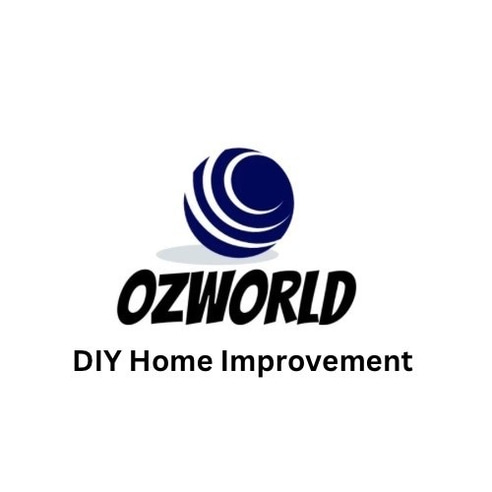How To Plan Your Next Project


Planning Your DIY Projects
The foundation of any successful DIY project lies in meticulous planning. Before embarking on any home improvement task, it is essential to have a clear vision of what you want to accomplish. This vision serves as a guide throughout the project, helping to ensure that the final outcome aligns with your expectations.
Setting a budget is a critical component of your planning process. Determine how much you are willing to invest in your project, considering both materials and tools. A defined budget helps prevent overspending and encourages resourcefulness in finding alternatives or reusing items already on hand. Reliable budgeting can significantly enhance your experience, keeping frustrations at bay and allowing for adjustments should unexpected expenses arise.
Creating a realistic timeline is also integral to effective DIY project planning. Estimate how long each phase of the project will take, from preparation to execution and final touches. Be sure to factor in potential delays or challenges that may arise, as this will prevent you from feeling overwhelmed. Allocating specific time blocks for tasks will help maintain focus and efficiency throughout the project.
Researching various project ideas can provide insight into what best suits your needs and limitations. Gather inspiration from social media platforms like Pinterest or home improvement shows, which showcase a wide range of DIY projects. Additionally, developing a detailed list of required materials and tools will streamline the process, ensuring you have everything on hand before you begin. Engaging in thorough planning not only minimizes costly mistakes but also enhances overall satisfaction with the finished product. A well-thought-out approach lays the groundwork for successful DIY ventures, allowing for creativity and personalization while minimizing stress.
Eco-Friendly Materials and Practices
The increasing awareness around environmental sustainability has led to a notable shift in the DIY and home improvement sectors. In 2025, eco-friendly materials are no longer a niche choice but a prevailing trend among homeowners and DIY enthusiasts alike. Utilizing sustainable materials not only reduces one’s ecological footprint but also contributes to healthier living spaces. Alternatives such as reclaimed wood, which is often sourced from old buildings, barn structures, and even reclaimed furniture, provide both aesthetic appeal and a story behind each piece. When sourcing reclaimed wood, it is advisable to explore local suppliers or specialty building material stores that focus on salvaged items.
Low-VOC (volatile organic compounds) paints represent another significant advancement in eco-friendly DIY practices. Traditional paints often release harmful emissions, affecting indoor air quality. In contrast, low-VOC paints are formulated to minimize these effects while maintaining color vibrancy and durability. Opting for these products not only promotes a healthier living environment but also demonstrates your commitment to sustainability. They can easily be found at paint suppliers and home improvement stores, often in various finishes and colors.
The incorporation of recycled materials offers yet another layer of sustainability in home improvements. From reclaimed bricks to upcycled furniture, these materials can dramatically enhance the character and charm of any space. Integrating eco-friendly practices into your DIY projects requires a commitment to design and functionality without compromising on style. Searching for local recycling centers, thrift shops, or online marketplaces can provide abundant resources for sourcing such materials.
In an era that prioritizes sustainability, employing eco-friendly materials not only advances your home improvement efforts but also fosters a greater appreciation for the environment. By consciously choosing sustainable options, you contribute positively to the planet while enhancing the aesthetic appeal of your indoor and outdoor spaces.
Essential Tools and Techniques for Home Improvement
Embarking on DIY projects and home improvements requires the right set of tools and techniques to ensure successful execution. A foundational understanding of these elements can not only enhance the quality of your work but also make the process more enjoyable. First and foremost, some essential tools to have on hand include a hammer, screwdriver set, measuring tape, utility knife, level, and pliers. These basic tools will cover a variety of tasks, from assembling furniture to minor repairs around the house.
As you delve deeper into specific projects, investing in specialized tools may become necessary. For example, if you're planning on tiling, a tile cutter and a notched trowel are indispensable. Similarly, for painting projects, a high-quality paintbrush and roller, along with painters' tape, will yield a professional-looking finish. Additionally, for landscaping tasks, tools such as a shovel, rake, and pruning shears are vital for maintaining your outdoor space effectively.
Safety is paramount when engaging in DIY activities. Always wear personal protective equipment (PPE) such as goggles, gloves, and a mask, particularly when handling hazardous materials or during demolition. Familiarizing yourself with the proper handling and storage of tools can further prevent accidents. For woodworking tasks, understanding how to safely operate power tools is critical; always follow the manufacturer's instructions and implement necessary safety measures.
When considering tools, it is advisable to invest in quality options that provide durability and performance. High-quality tools typically offer greater precision and ease of use, which can drastically reduce the time and effort needed for your DIY projects. By equipping yourself with the right tools and employing effective techniques, you will lay a strong foundation for successful home improvement ventures, ensuring that both the process and the results are rewarding.
Innovative Ideas for Indoor and Outdoor Projects
As we look forward to 2025, the realm of DIY projects is expanding, presenting a plethora of innovative ideas for transforming both indoor and outdoor spaces. One trending project gaining popularity is the installation of vertical gardens. This project not only enhances your home’s aesthetics but also promotes urban gardening. Materials typically include modular planting systems, appropriate soil, and assorted plants. It’s suitable for beginners who can start with easy-to-maintain herbs or flowers to create an eye-catching, compact garden on their walls.
Moving on to technology, home automation systems represent a significant leap in how we manage our living environments. DIY enthusiasts can consider installing smart lighting or automated blinds using affordable kits available at most hardware stores. This project can vary in complexity from beginner to advanced, depending on the desired system's sophistication. A basic setup might include smart bulbs and a smartphone app, while a more complex installation could entail rewiring for a comprehensive home automation solution. Clear instructions from product manufacturers can guide users throughout the installation process.
Energy-efficient lighting solutions are also a vital topic in DIY home improvements for 2025. Implementing LED strip lights under cabinets or around outdoor patios can elevate spaces while reducing energy consumption. A project such as this is beginner-friendly and only requires planning the layout, selecting the necessary LED strips, and adhering them to the desired surface. For those looking to tackle more complicated installations, consider integrating solar-powered options for outdoor areas.
Lastly, crafting customizable outdoor furniture is an engaging project that blends creativity with functionality. Using durable wood or repurposed materials allows individuals to create tailored pieces suited for their spacing needs. Beginner-friendly plans are available online, guiding novice builders step-by-step in crafting unique chairs or tables.
These innovative DIY ideas are not only inspiring but also practical, encouraging homeowners to unleash their creativity and enjoy year-round home improvements.
This blog offers fantastic DIY tips that transformed my home. Highly recommend for creative inspiration!
Emily R.


★★★★★
